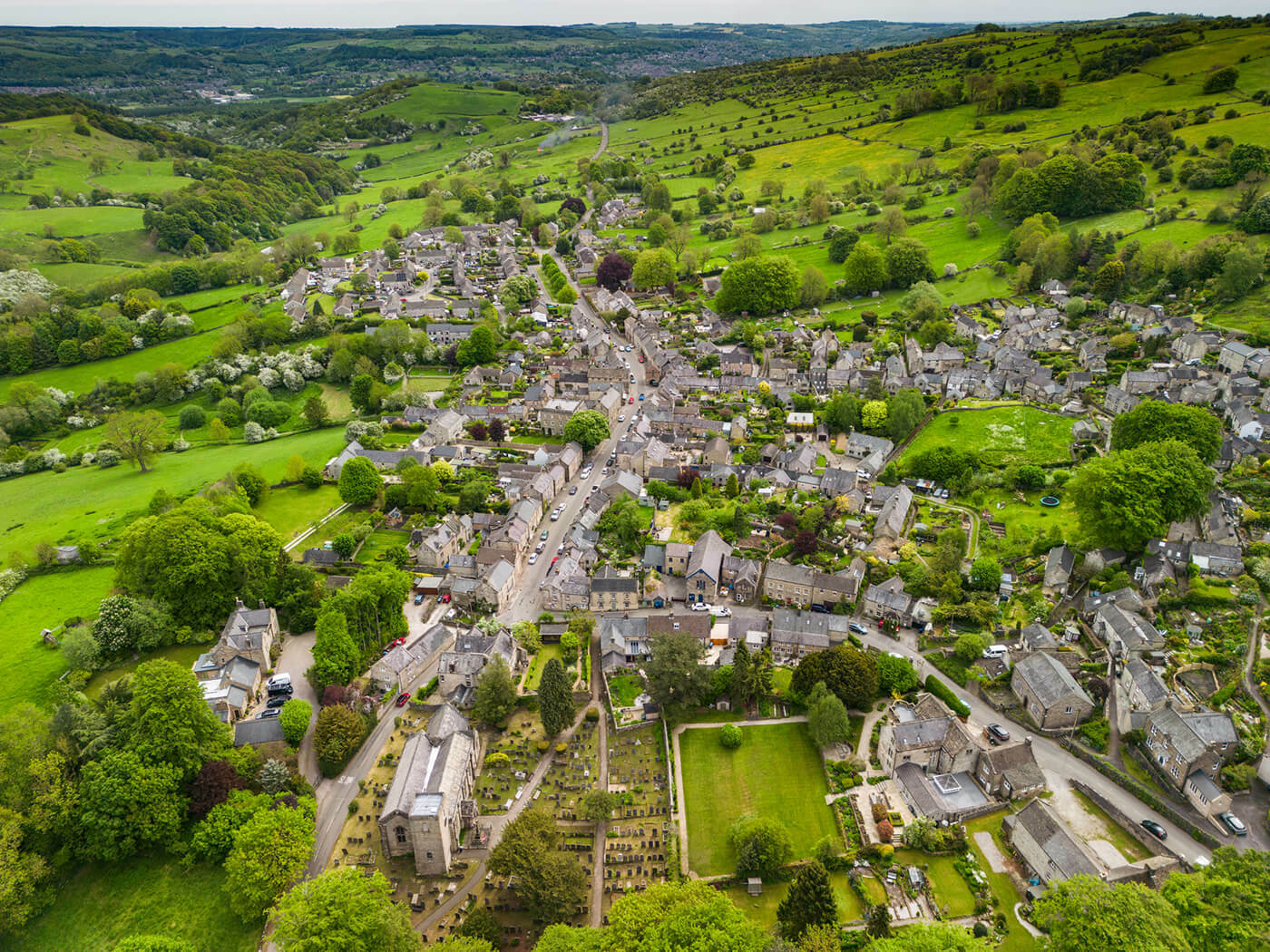GeoPlace
|
|
UPRNs in buildings’ analysis – addressing climate change
Buildings are responsible for 40% of the European Union’s energy consumption and 36% of its greenhouse gas emissions. To reduce the impact of climate change as quickly as we can in the UK, we need to improve the energy-efficiency of older building stock. But to make that work effective, it must be planned at scale – a challenge in itself, as every building is unique.

By Gayle Gander, Head of Marketing and Simon Barlow, Director of Consultancy
The UPRN (Unique Property Reference Number) can be used for modelling innovative approaches that can deliver the necessary change, on the timelines recommended.
The journal Nature recently published a paper ‘Points for energy renovation (PointER): A point cloud dataset of a million buildings linked to energy features’. The article suggested that to combat climate change, buildings in Europe need to be upgraded. However, this task is challenging because each building has a unique set of characteristics. Currently, we assess a building's energy performance through on-site visits, which are slow and expensive. The paper introduces a dataset of building shapes that allows analysts to understand, on a large scale, how buildings look in 3D and how energy-efficient they are.

Winster, Peak District
The researchers create these building shapes by combining building outlines with location data from LiDAR (Light Detection and Ranging). They then connected them with details from the UK’s energy performance database using UPRNs. To accurately represent England’s diverse building types, they selected one million structures from various rural and urban areas, half of which have linked energy information. Open-source code allows the generation of similar datasets for new regions.
This dataset opens up opportunities for groundbreaking research in building energy modelling. Moreover, it can easily expand into other research areas by adding details through the UPRN or location information.
Currently, the energy performance potential of most building stock involves a physical assessment in the form of a visit to collect a wide set of variables. Depending on the building stock, this may be a slow, costly, and even prohibitive exercise – and in addition, there are challenges concerning the use of Energy Performance Certificates (EPC) as evidence of infrastructure effectiveness: multiple EPCs may exist for the same property, which means it’s not possible to be sure the latest certificate is included in analysis.
However, with robust insights about a large-enough sample of buildings and guaranteed, up to date and accurate location data – new ways to approach retrofitting can be modelled with confidence before budgets or resources need to be committed. What’s needed, is a common identifier that enables the linking of datasets to deliver that modelling: this exists with the Unique Property Reference Number. Read the review in the RICS Property Journal on how UPRNs harness the power of EPC data and the Department for Levelling Up, Housing & Communities’ introduction to the inclusion of UPRNs in EPCs.

Hastings Old Town in East Sussex
The UPRN is ideal as it is already an integral part of the Energy Performance of Buildings Register, the official place for all EPCs, Display Energy Certificates (DECs) and Air Conditioning Inspection Reports (ACIRs). Many local authorities, businesses and organisations have started exploring the role for UPRNs in climate-change mitigation, and most of them are open to discussing how their work can ensure efficiency and effectiveness. Below we’ve brought several case studies together, showing just how effective the UPRN is that analysis and integration:
- Nottingham City Council uses UPRNs to integrate datasets with confidence for its Carbon Reduction Projects and Policy service area. Linking the UPRN with national EPCs has delivered a foundation dataset to inform criteria-based funding. Find out more.
- As a contribution to In Smart – a pan-European plan to develop sustainable, city-focused energy action plans in four key locations – the University of Nottingham integrated many different datasets and used UPRNs within the Local Land and Property Gazetteer data to verify that underlying data. Find out more.
- At the GeoPlace 2022 conference, representatives from the Department for Business, Energy and Industrial Strategy (BEIS) showed how the UPRN is essential in understanding energy-use in British building stock. And Barnsley Metropolitan Borough Council uses the UPRN to help identify vulnerable families living in fuel poverty – an excellent example of the complex considerations in mitigating the impact of climate change. Find out more.
Analysis of building stock is intrinsically complex. But using UPRNs as the single point of truth does not necessarily mean committing extensive additional resources or going through organisation-wide technical change. It’s a geospatial enabled reference that can link disparate databases with extraordinary positive outcomes.
For example, Ofgem (the UK’s energy regulator) is now using UPRNs as the key address attribute for storing and communicating all addressing information about retail energy locations. In the long term it should promote greater adoption, plus accurate and consistent address lookups for distributors and providers too – ultimately benefitting energy users. In the short term, the UPRN enables Ofgem to drive greater efficiency into the schemes it’s promoting. These include the Boiler Upgrade Scheme, the Green Gas Levy, the Energy Company Obligation, the regulation of heat networks and Renewables Obligation. Accurate addressing is needed to record energy activity at each premises, and analysis of that data is formative in creating plans to retrofit building stock that doesn’t meet acceptable standards. Check out the presentation from Ofgem at last year's GeoPlace conference.
At that same conference, the Carbon Trust discussed 'Decarbonising the building stock: using address level data to understand the route to Net Zero in the built environment'. The presenter, Will Rivers, outlined how the London Borough of Lambeth has used address level data to identify viable options for all the buildings in the Borough. The Carbon Trust developed profiles for 60,000 buildings, then assessed the options for retrofits – everything from improved energy efficiency and insulation, to renewable and low carbon technologies like heat pumps. He demonstrated how the borough compared heat networks with individual building-level solutions, and explored the scale of change required to reach Net Zero by 2050.
This leads to the work of the Department for Business, Energy & Industrial Strategy (BEIS), and its development of a National Energy Efficiency Data-Framework (NEED) now being scaled into the National Buildings Database being developed by the Department of Energy Security & Net Zero. This dataset of aggregated statistics has been published every year, covering domestic infrastructure since 2011 and non-domestic infrastructure from 2014. The UPRN enables links between VOA ratings list, and annual meter points for consumption data – again, all integral to understanding the use of energy in building stock. UPRNs are vital for this integration.
Carrying this forward, Paul Ruyssevelt, Professor of Energy and Building Performance, UCL Energy Institute, Building Stock Lab will speak at this year's GeoPlace conference on 'Linking data dynamically, a national buildings dataset for energy use.'
We’re also seeing more recognition of the utility of UPRNs in supporting the design and delivery of local net zero projects. The Energy Systems Catapult has launched a series of prepackaged datasets to do exactly this, utilising UPRNs to enable overlaying the integration of these datasets with the user’s own. The Energy Systems Catapult states that the use of such datasets enables more rapid decision making to speed up the net zero transition without the need for lengthy delays for custom-made datasets to be compiled.
If you’re interested in finding out more about buildings analysis and the UPRN, reach out to our team for insights and background data on effectiveness of integration.
Original article link: https://www.geoplace.co.uk/blog/uprns-in-buildings-analysis-addressing-climate-change
 |
| Home | About | Addressess | Streets | Helpdesk | News & Events | Exemplar | Consultancy |


.gif)